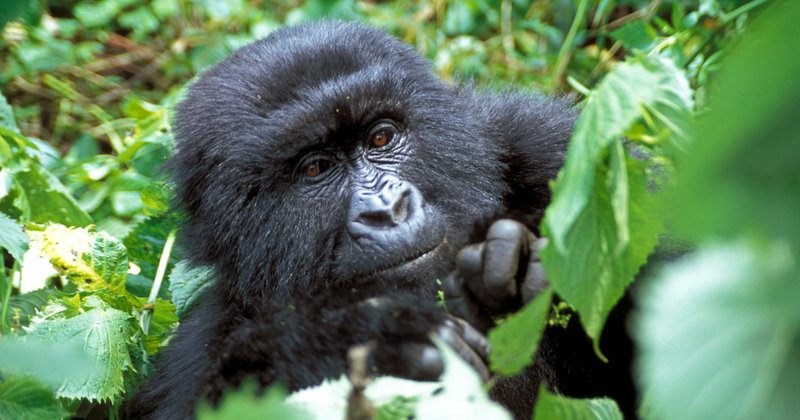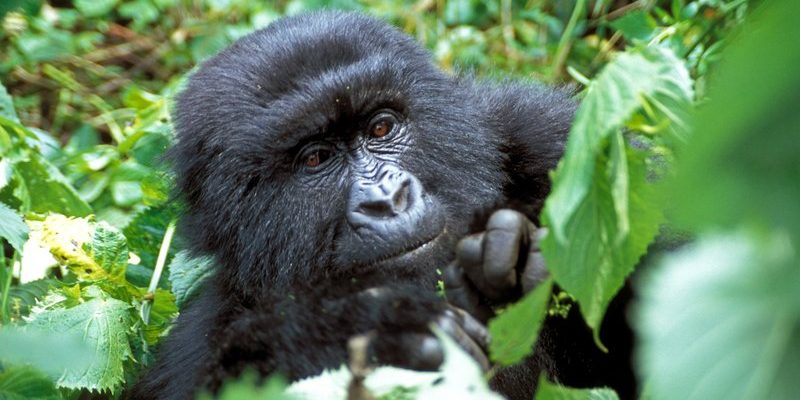
Eastern gorillas are primarily herbivores, munching on leaves, stems, and fruits, but their foraging tactics can be as complex as a well-planned grocery trip. Let’s unpack their diet, where they find food, and how they navigate their environment to stay both nourished and safe from potential threats. It’s a captivating world, one where these incredible animals showcase resilience and adaptability in the wild.
Understanding the Eastern Gorilla’s Diet
The eastern gorilla, which includes two subspecies—the eastern lowland gorilla and the mountain gorilla—has a diet that’s all about variety. They graze primarily on leaves, fruits, stems, and flowers, but the exact composition can depend on their habitat and the season. Just like we might have different meals based on what’s available at the grocery store, these gorillas adjust their diets to match the bounty of their surroundings.
Leafy Greens
One of the mainstays of their diet is leafy greens. Eastern gorillas consume a variety of leaves from trees and shrubs. These greens provide essential nutrients and may also help them maintain their healthy digestive systems. Think of it as the gorilla version of loading up on spinach and kale!
Fruits Galore
Fruits are a delightful treat for eastern gorillas. They feast on everything from bananas to berries, becoming particularly fruit-crazy when seasonal fruits are ripe and abundant. This is not just a feast—they also get a boost of energy and important vitamins and minerals from these tasty snacks.
Stems and Flowers
In addition to leaves and fruits, eastern gorillas snack on stems and flowers. These parts of the plants can be rich in fiber, which helps with digestion. Imagine munching on the crunchy stems of celery or the petals of edible flowers; it’s similar for gorillas, who find different textures and tastes appealing.
Foraging Behavior of Eastern Gorillas
You might be wondering how these gorillas find their food. Foraging is a skill they hone every day. Their approach is both methodical and instinctive, akin to a family gathering for a picnic, where everyone pitches in to find the best snacks.
Gorillas’ Social Structures
Eastern gorillas are social animals, often living in groups led by a dominant male. This social structure plays a crucial role in foraging. Members of the group communicate and work together to identify the best food sources. They might take turns trying out different areas of their territory, which helps them cover more ground.
Spatial Awareness
Having a strong sense of their environment is key for eastern gorillas. They remember where food sources are located and can navigate their dense forest habitats with ease. It’s like having an internal GPS that guides them to those tasty treats.
Time of Day and Weather
Interestingly, the time of day and weather can impact their foraging too. Eastern gorillas tend to be more active during the cooler parts of the day, such as early morning and late afternoon, making it an ideal time for foraging. Plus, when it rains, it might be easier for them to find soft, delicious fruits that have fallen from trees.
Hunting Strategies: The Rare Instances
While we usually think of gorillas as peaceful herbivores, there are rare occasions where they exhibit predatory behaviors. It’s important to clarify that these instances are not typical and are not a primary part of their diet. Let’s unpack what that looks like.
Insect Consumption
One of the few instances where eastern gorillas may show predatory behavior is when they consume insects, particularly ants and termites. Although this isn’t “hunting” in the traditional sense, it does reveal a fascinating aspect of their dietary flexibility. They might use sticks to poke into anthills or termite mounds, much like we might use a tool to scrape out the last bit of peanut butter from a jar.
Occasional Small Animals
There are anecdotal reports of eastern gorillas eating small animals, but these are exceptions rather than the norm. They typically rely on their extensive plant-based diet, but if they encounter a small animal, they might indulge, especially if food is scarce. It’s akin to you finding a leftover slice of pizza when you’re really hungry—sometimes, you just can’t resist!
Environmental Factors Influencing Diet
The availability of food is heavily influenced by the environment in which eastern gorillas live. Their habitats range from dense tropical forests to mountainous regions, and each area presents unique challenges and opportunities for food.
Seasonal Changes
Seasonality plays a significant role. In some areas, fruits might only be available during specific times of the year. Eastern gorillas adapt by eating more leaves in the lean months when fruit is less available. Just like we might rely on canned goods in winter, gorillas are masters at flexibly adapting their diets based on what’s at hand.
Deforestation and Habitat Loss
Unfortunately, habitat loss is a significant threat to eastern gorillas. Deforestation, often due to logging or agricultural expansion, impacts their access to food. This means their already diverse diet could become limited, forcing them to adapt even further. It’s a reminder of how interconnected our ecosystems are and how important it is to protect these magnificent creatures’ homes.
To sum it up, the diet and hunting strategies of the eastern gorilla are emblematic of their adaptability and resourcefulness. From their varied herbivorous meals to the rare instances of insect consumption, eastern gorillas showcase incredible resilience, navigating their environments with skill.
Understanding their dietary habits is vital for conservation efforts, especially as we face ongoing threats to their habitats. By protecting these amazing animals and their environments, we can ensure that they continue to thrive in the wild. Their stories remind us of the intricate balance of nature, and how every creature, big or small, plays a role in the larger tapestry of life. So, the next time you’re enjoying a meal, think about these incredible foragers and their connection to the world around them.

